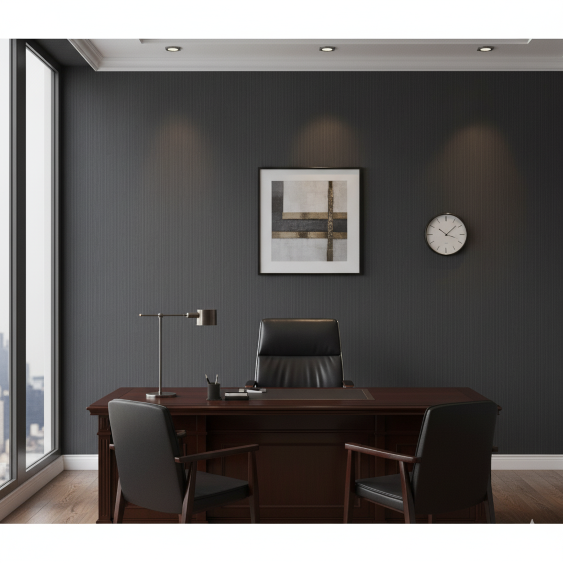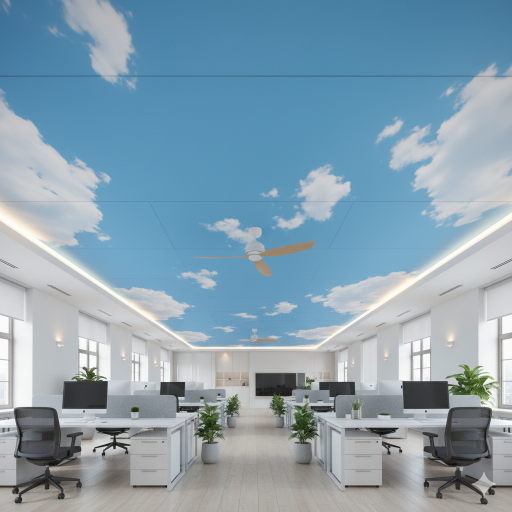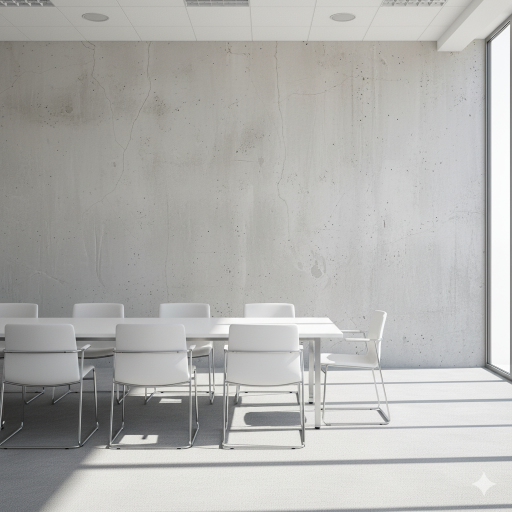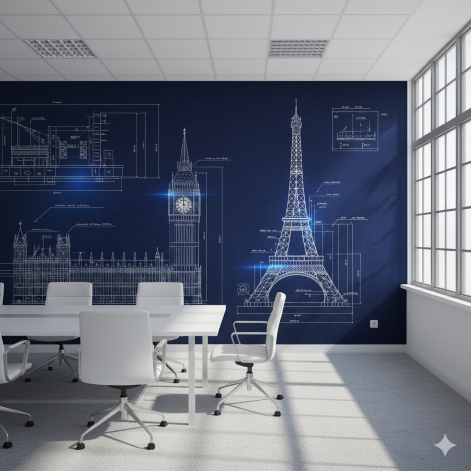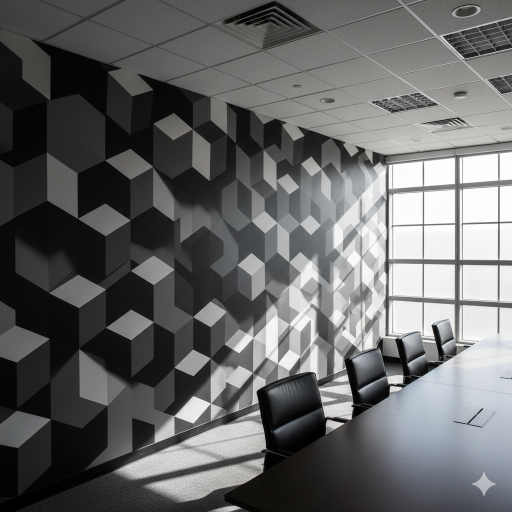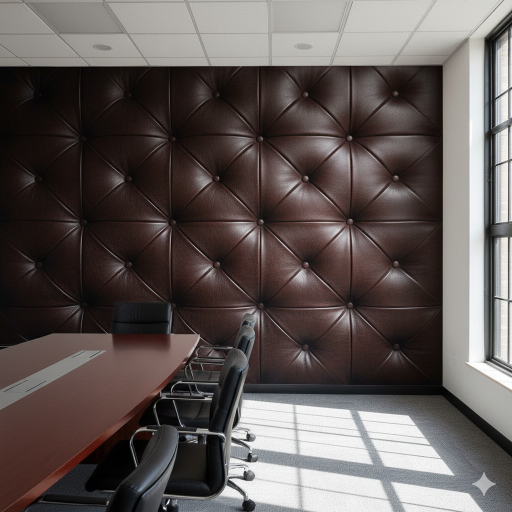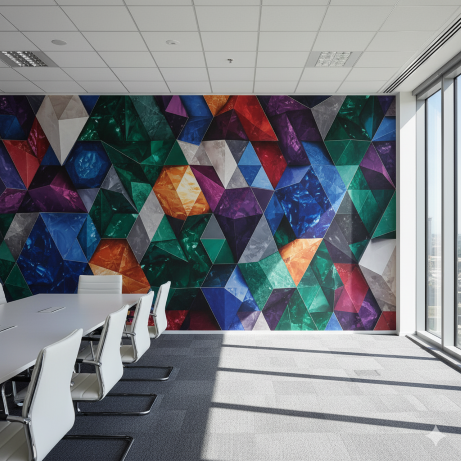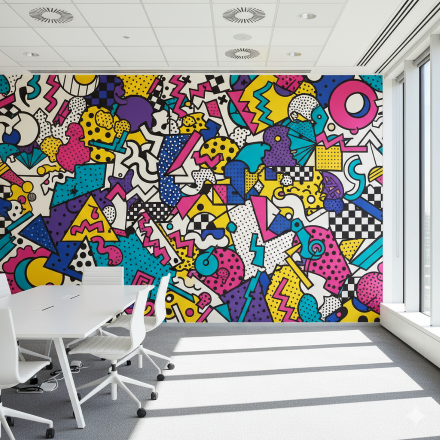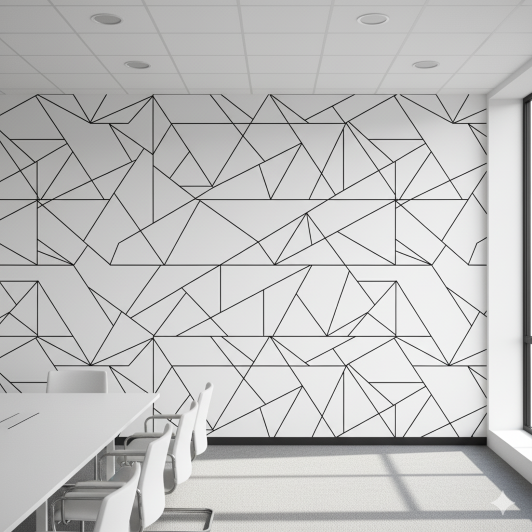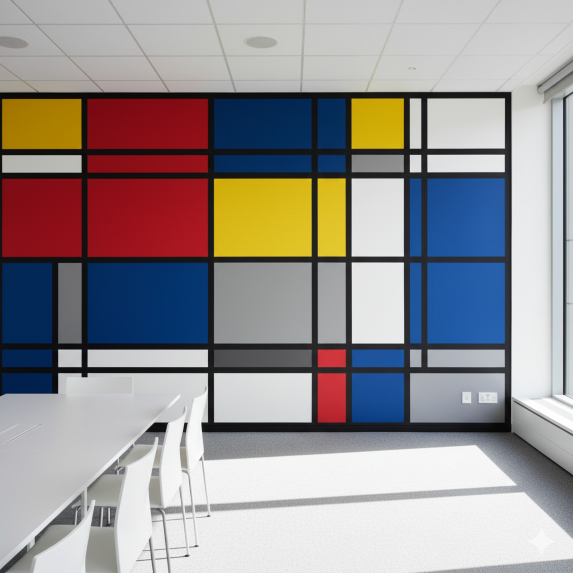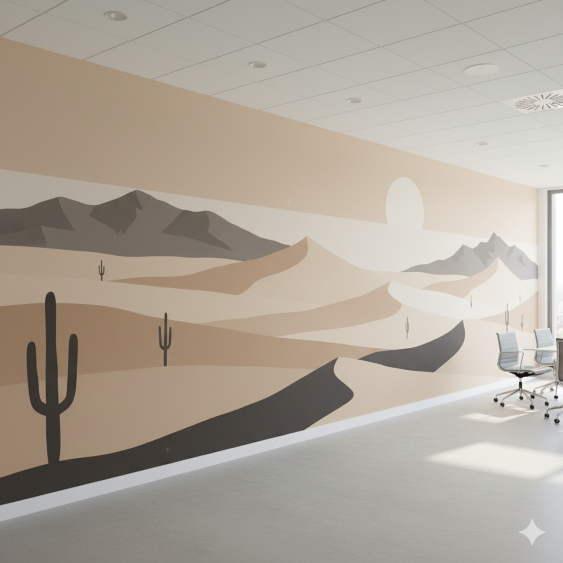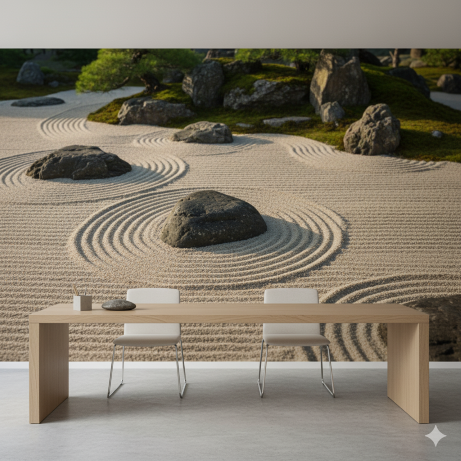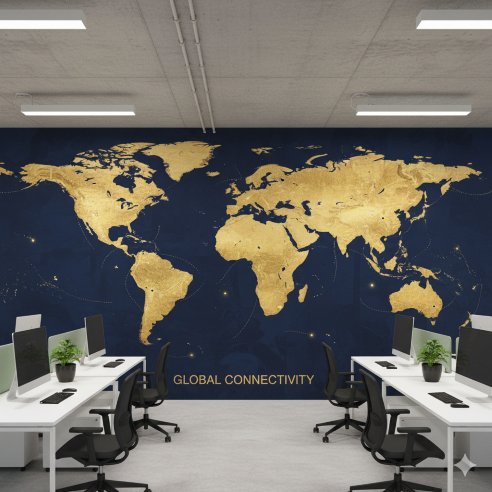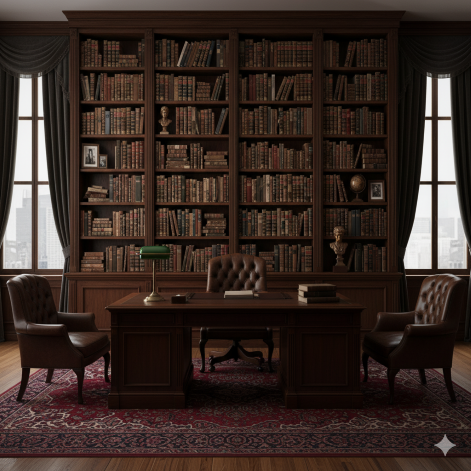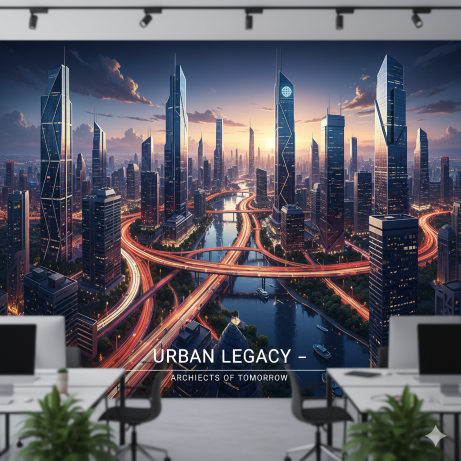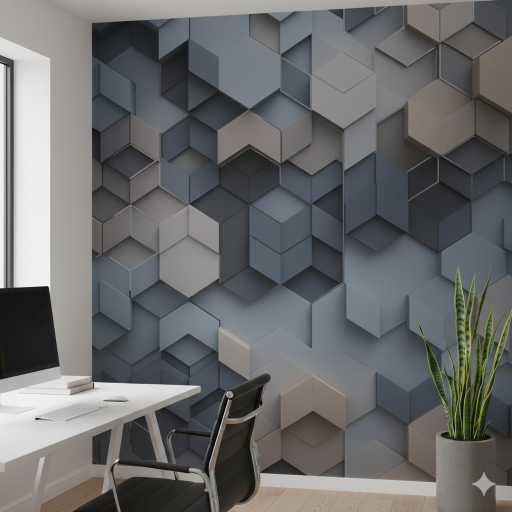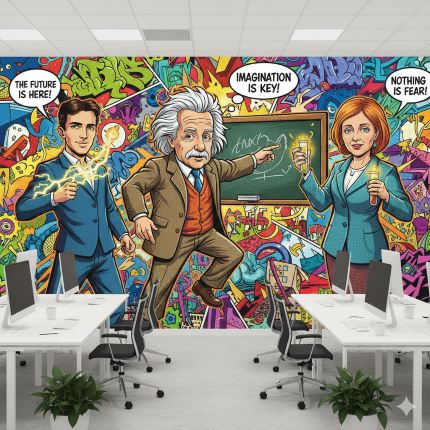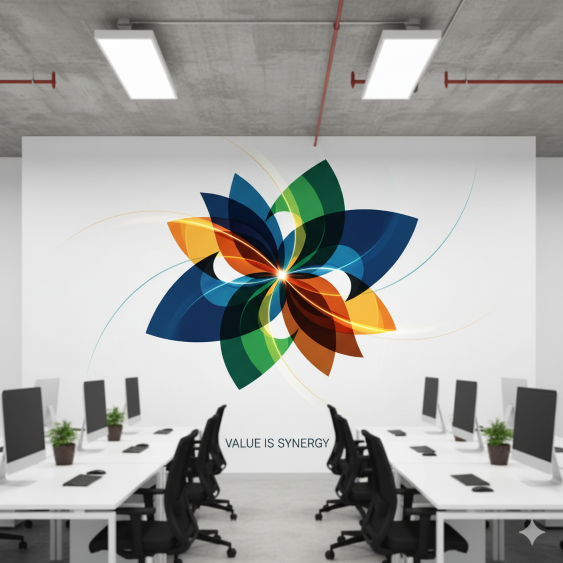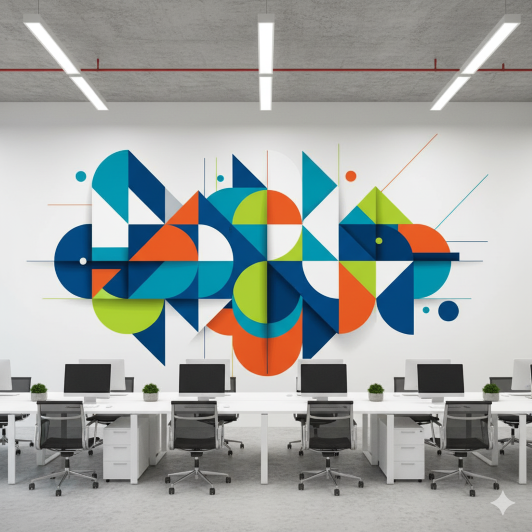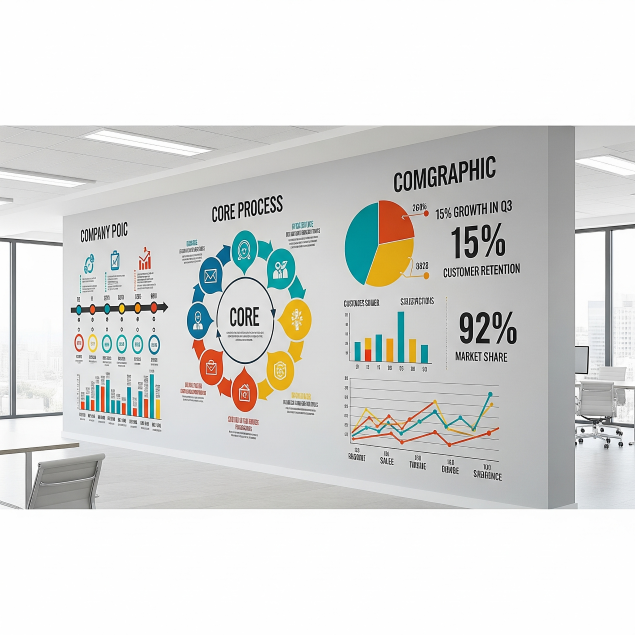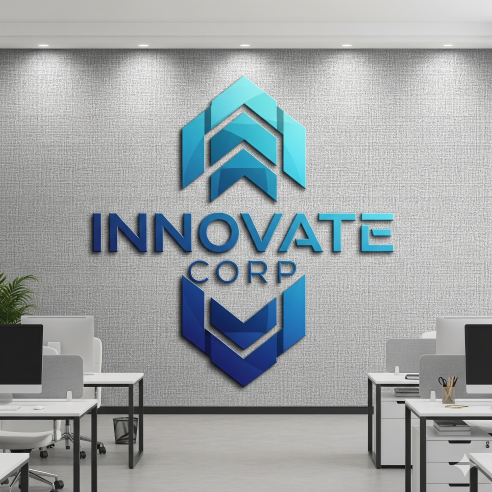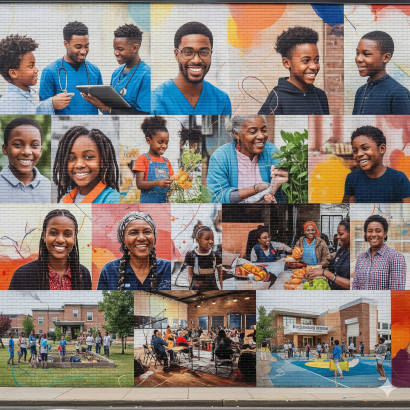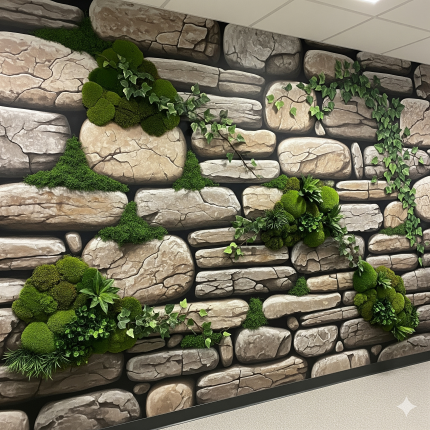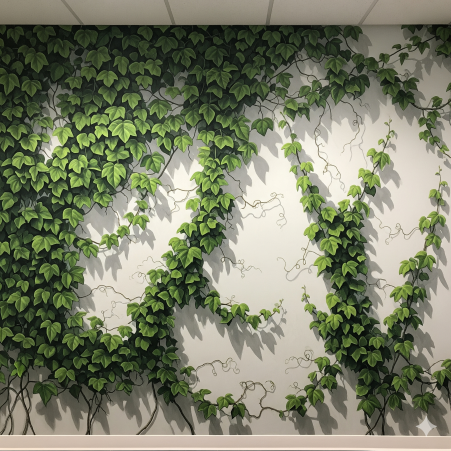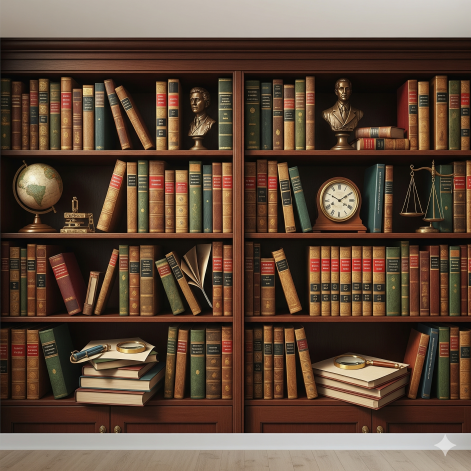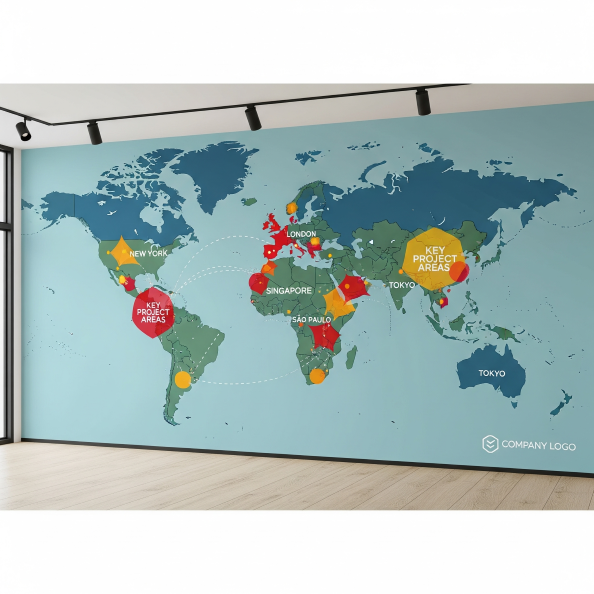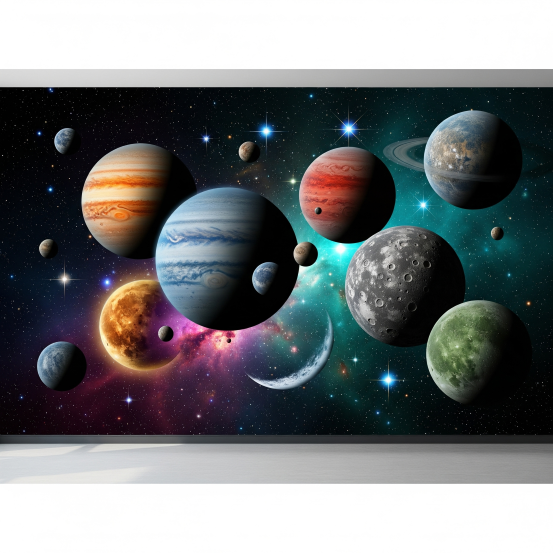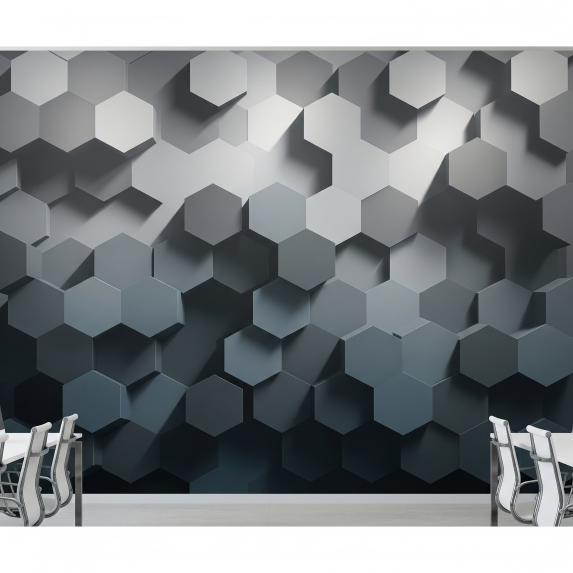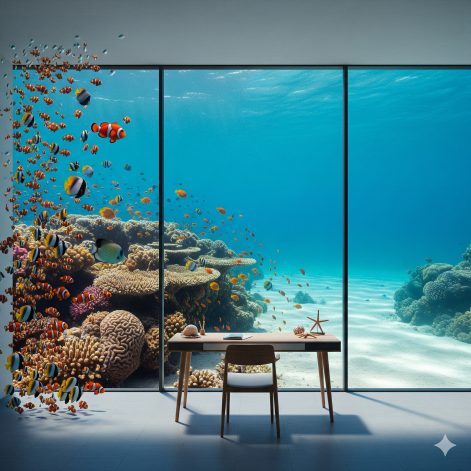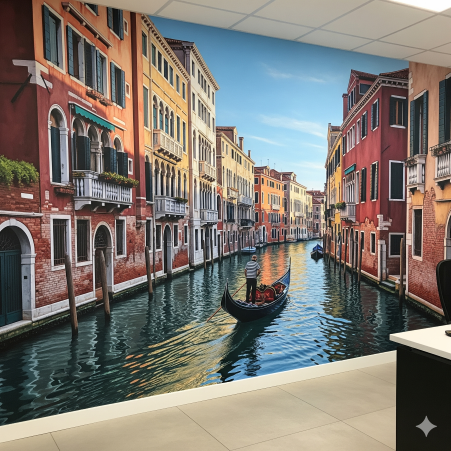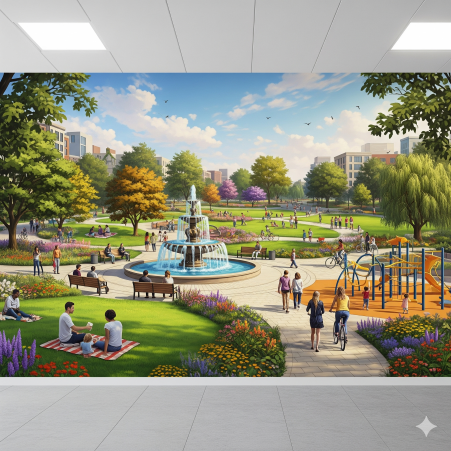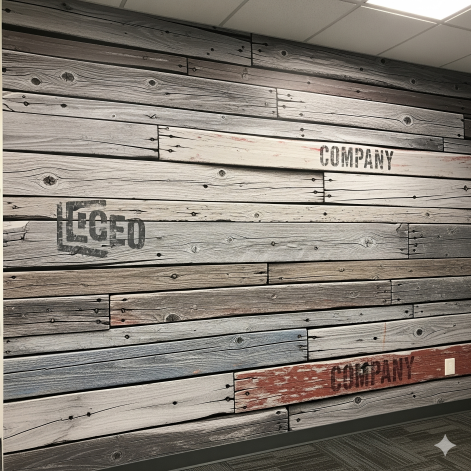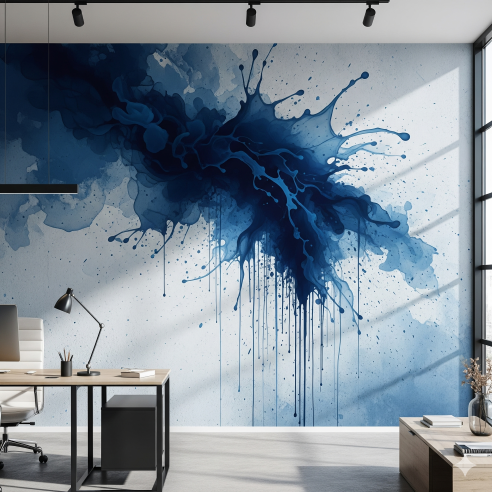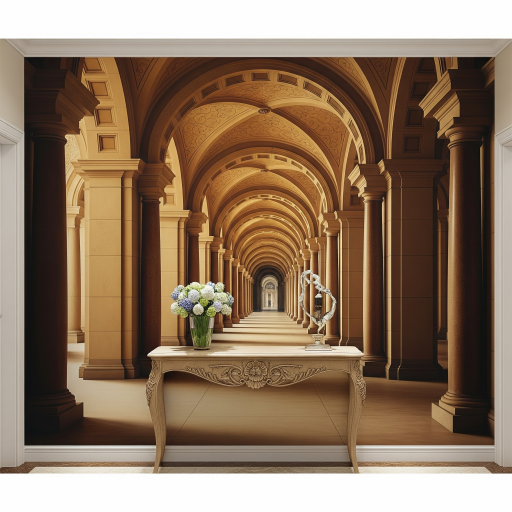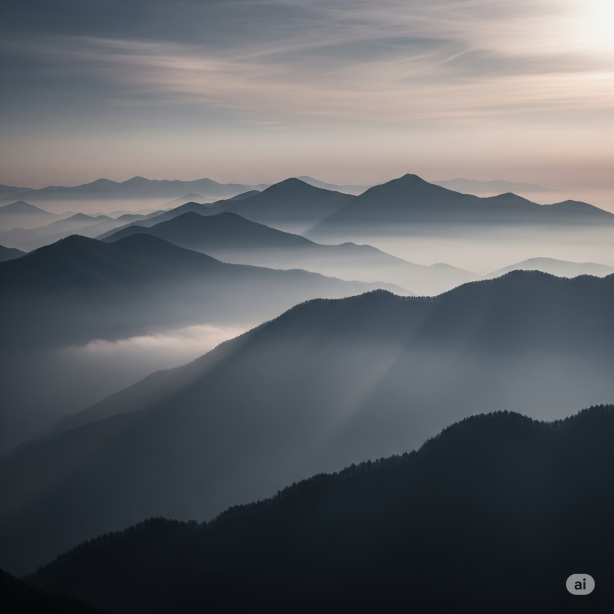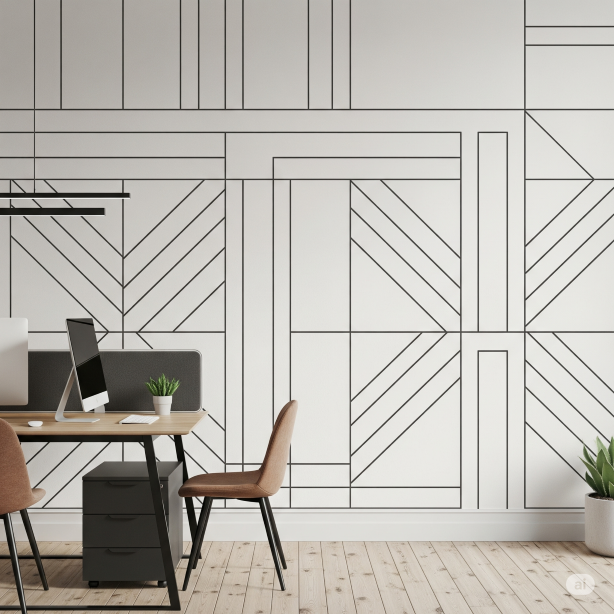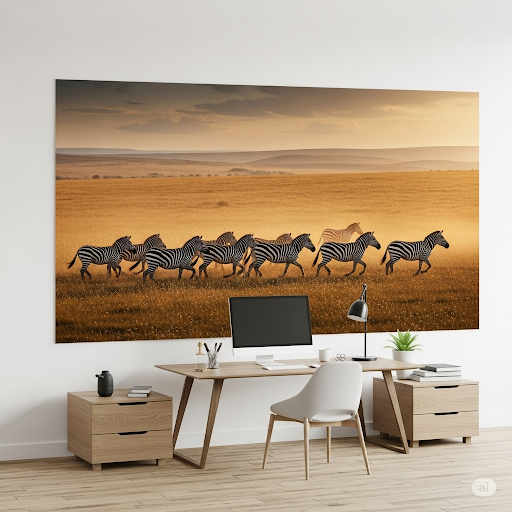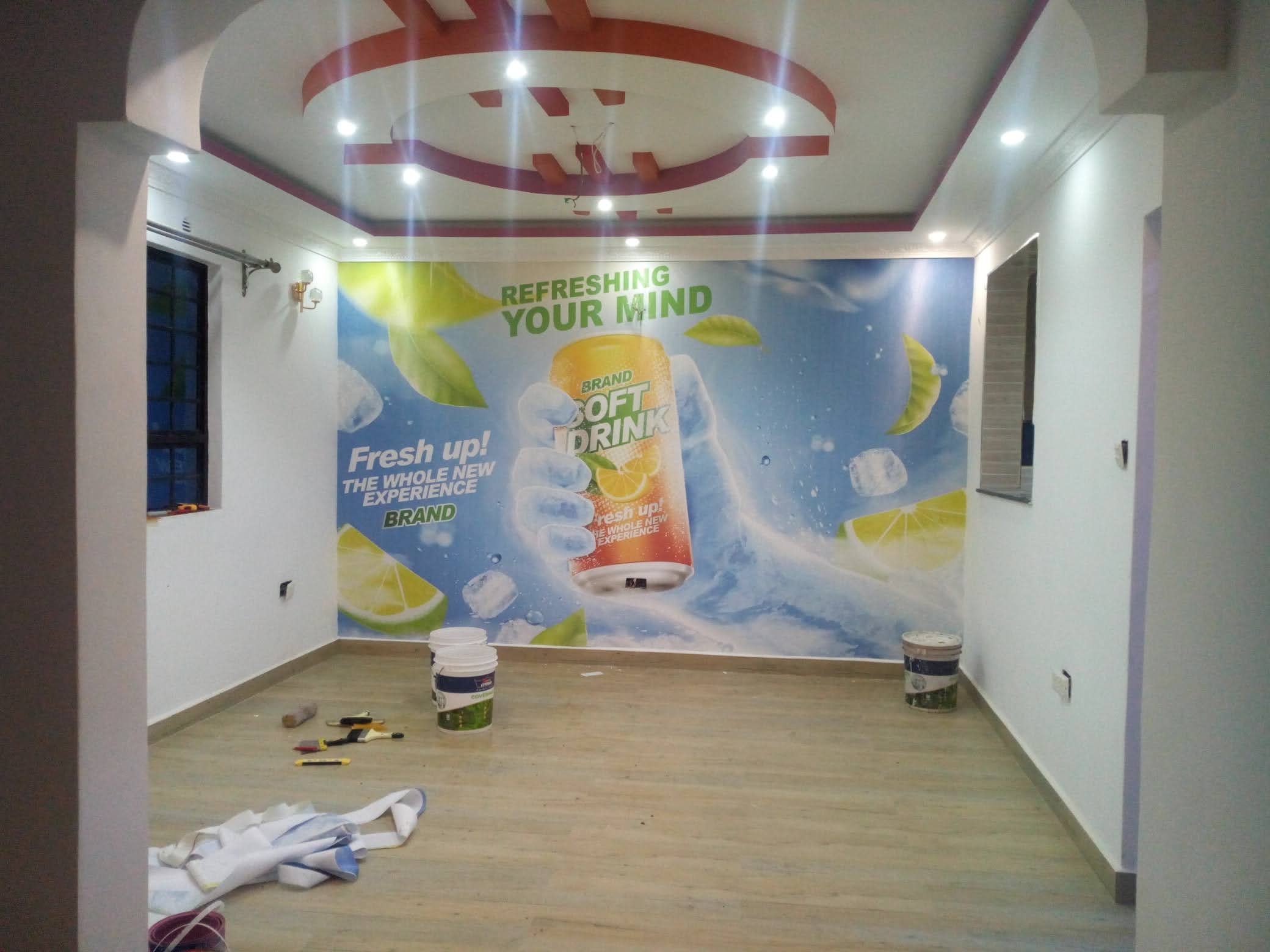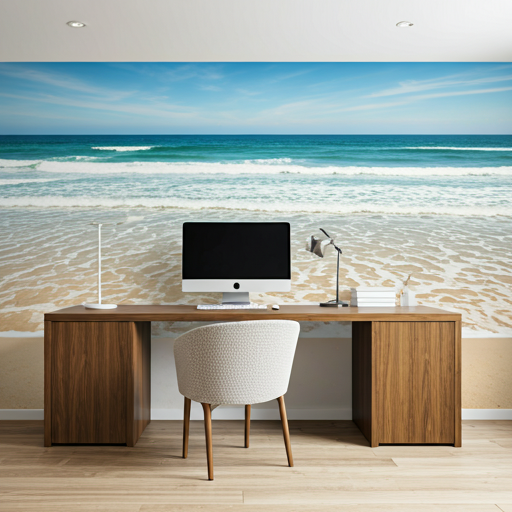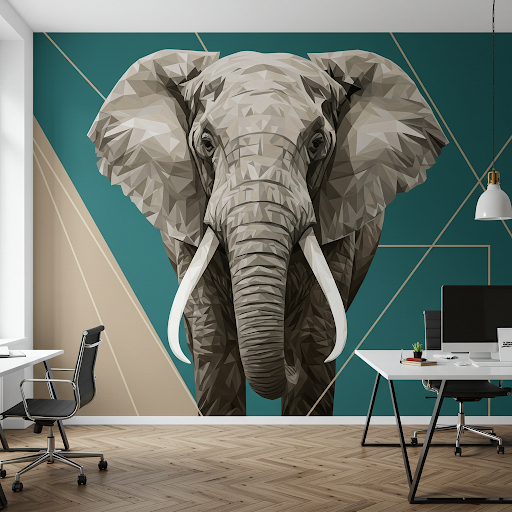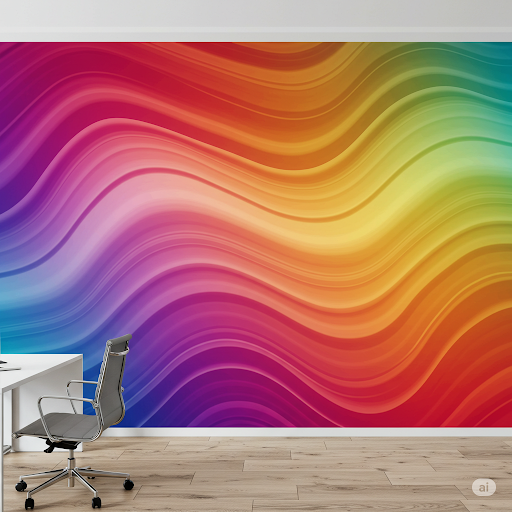Description
Office cabin wallpaper design purpose and functionality
“Office cabin wallpaper design” is the strategic application of decorative wall coverings within a private or semi-private office space (a cabin, executive suite, or dedicated home office) with the primary goals of enhancing the work environment, reflecting the user’s personal brand or the company’s ethos, and supporting psychological well-being and productivity.
It encompasses the selection and implementation of office cabin wallpaper based on several key, interconnected elements:
Aesthetic Enhancement
The primary function of office cabin wallpaper design is to elevate the visual appeal of the workspace far beyond the limits of standard paint. It is the tool for introducing visual depth and complexity. Wallpaper provides a unique opportunity to incorporate fine textures like linen, woven grass cloth, or sophisticated embossed patterns that immediately make the space feel more bespoke and curated.
By replacing flat, monotonous color with dynamic patterns or realistic faux finishes—such as polished concrete or marble—the design adds immediate architectural character. This transformation moves the cabin from a purely functional box to an inspiring, high-end environment that feels both welcoming and distinctly professional.
Brand/Personality Reflection
Wallpaper is a powerful, non-verbal communication tool used to anchor the office cabin’s identity. For a corporate setting, the design can subtly integrate brand elements through custom-colored geometrics. Or large-scale murals depicting the company’s mission or milestones. This visually reinforces the organization’s culture and values to both the occupant and any visiting clients.
For an executive or home office, the choice reflects individual professional status and taste. A law partner might opt for classic pinstripes or a rich wood panel effect to convey tradition and authority. But a creative director might select abstract, colorful art to project innovation and a dynamic personal brand.
Mood and Productivity
The strategic use of wallpaper leverages color psychology to directly influence the occupant’s emotional state and cognitive function. Designers choose colors based on the work being done in the cabin. Cool tones, like muted blues, soft greens, and calming neutrals, are selected to promote a sense of tranquility, focus, and mental clarity. This is ideal for analytical and administrative tasks.
Conversely, a bold geometric pattern or an accent wall in a moderate warm color, such as yellow or orange, can be used to inject optimism and creativity, making it perfect for brainstorming or design-intensive work. The goal is to create a visual backdrop that minimizes fatigue and sustains productive energy.
Acoustics and Durability
Beyond aesthetics, the practical selection of commercial-grade wallpaper addresses the cabin’s functional requirements for longevity and comfort. The wallpaper’s material is often a solution for durability. Heavy-duty vinyl or fiberglass options are easy to clean, highly resistant to scuffs and tears. And can withstand regular use in a professional setting.
Furthermore, many thicker, textured, or fabric-backed wall coverings inherently possess minor acoustic properties. While not a replacement for dedicated soundproofing, these materials can help absorb some sound waves. Thus subtly reducing echo within the small space and contributing to a quieter, more comfortable environment conducive to phone calls and deep concentration.
Office cabin wallpaper design elements
The actual visual and tactile components of the wallpaper:
Office cabin wallpaper design color palette
The selection of the wallpaper’s color palette is fundamental, setting the entire mood for the office cabin. The professional default often leans heavily towards calming, sophisticated neutrals. For instance, soft grays, warm taupes, and sophisticated beige provide a non-distracting backdrop for intense work. But for a more traditional or authoritative executive feel, deep, rich tones like navy blue, charcoal, or hunter green are frequently employed, signifying stability and focus.
Conversely, a modern design might integrate a bold accent color—like a rich emerald or a deep terracotta—on a single wall. This calculated use of color ensures the space feels professional, while the accent adds visual interest and a burst of necessary energy or personality.
Geometric
Geometric patterns provide an immediate sense of structure, order, and modernity vital for a professional workspace. The designs typically feature clean, crisp lines and repeating shapes like precise chevrons, subtle pinstripes, or interconnected hexagons.
These patterns lend a highly organized and polished aesthetic to the office cabin, subtly conveying a brand or personal style that values precision and forward-thinking design. Opting for a monochromatic or tone-on-tone geometric pattern maintains a structured, professional feel. And at the same time adds visual interest that is much more dynamic than a solid color. Reinforcing an atmosphere of efficiency and contemporary elegance.
Textural/Faux Finishes
Textural and faux finish wallpapers are chosen to introduce a sense of richness and authentic material sophistication without the expense or structural burden of the actual materials. This design element includes coverings that expertly mimic the look and feel of natural materials. Like rugged, exposed brick for an urban-industrial vibe, or luxurious polished marble and sleek slate for an executive-level feel of permanence and high quality.
Furthermore, fabrics like woven linen or textured tweed patterns add a tactile softness and a tailored formality. These finishes introduce substantial depth to the walls, grounding the cabin’s design in a mature, established aesthetic.
Nature/Biophilic
Biophilic design, which connects the indoor environment with nature, is a key element for promoting psychological well-being in a stressful office environment. Nature-themed wallpapers feature calming motifs such as subtle botanical prints, serene forest scenes, or abstract representations of running water or clouds.
These designs are highly effective at reducing stress, lowering mental fatigue, and increasing the occupant’s self-reported feelings of tranquility and comfort. By bringing the visual elements of the outdoors into the office cabin, this design choice creates a visually restorative space. And it helps sustain focus and creativity over long work periods.
Custom Murals
Custom murals serve as a powerful centerpiece, making the most definitive personal or brand statement in an office cabin. Unlike repeating patterns, these are large-scale, non-repeating designs tailored to fit the wall perfectly. Common motifs include inspirational cityscapes that symbolize ambition, expansive abstract art that encourages creative thinking, or large-format motivational typography that visually reinforces company values or personal philosophy.
By transforming an entire wall into a singular piece of art, the custom mural immediately establishes a focal point. This injects the space with high-impact personality and makes it memorable for both the occupant and their visitors.
Office cabin wallpaper design: texture and finish
The physical texture and finish of the wallpaper are crucial tactile and reflective components that influence the cabin’s entire ambiance. Finishes like metallic accents (gold, silver) or high-gloss vinyl instantly add a touch of modern sophistication. Reflecting light to make a smaller cabin feel more expansive and airy.
Conversely, highly tactile surfaces, such as embossed wallpaper, flocked paper, or those with a matte, non-reflective finish, absorb light. Lending a sense of warmth, cozyness, and traditional luxury. This element dictates how the wallpaper interacts with the room’s lighting. Providing subtle or dramatic visual shifts that can elevate the design from merely decorative to truly dimensional.
Office cabin wallpaper contextual integration
The design must harmonize with the office’s overall interior architecture:
Space Optimization
In smaller office cabins, wallpaper design is a critical tool for manipulating visual perception and creating the illusion of greater space and height. Designers often specify papers in lighter colors and neutral tones—such as pale gray, off-white, or soft beige—as these hues reflect light, making the walls appear to recede and opening up the confined area. For cabins with low ceilings, the strategic application of vertical patterns (like narrow pinstripes or linear textures) draws the eye upward, visually extending the height of the room. By contrast, a darker or large-scale pattern is typically reserved for a single accent wall to prevent the small space from feeling claustrophobic.
Complementary Decor
Wallpaper selection must achieve seamless integration with the existing interior architecture and furnishings to ensure a cohesive and professional look. The pattern and color should be chosen to complement the scale and style of the furniture. For example, modern, minimalist furniture pairs well with subtle geometric patterns. But traditional wooden desks suit rich, textured, or damask designs.
Crucially, the design must also account for lighting. A matte finish absorbs light, requiring brighter artificial sources. Whereas a metallic or vinyl finish reflects both natural and artificial light, which can be leveraged to brighten a dim cabin or add visual warmth.
Office cabin wallpaper design focal point
Often, wallpaper is used on a single accent wall (like the wall behind the desk or the videoconferencing backdrop) to draw attention and make a high-impact statement without overwhelming the small cabin space.
In essence, office cabin wallpaper design is a deliberate interior design choice that balances aesthetics, psychology, and corporate identity to transform a simple work compartment into an inspiring, functional, and personalized executive environment.

